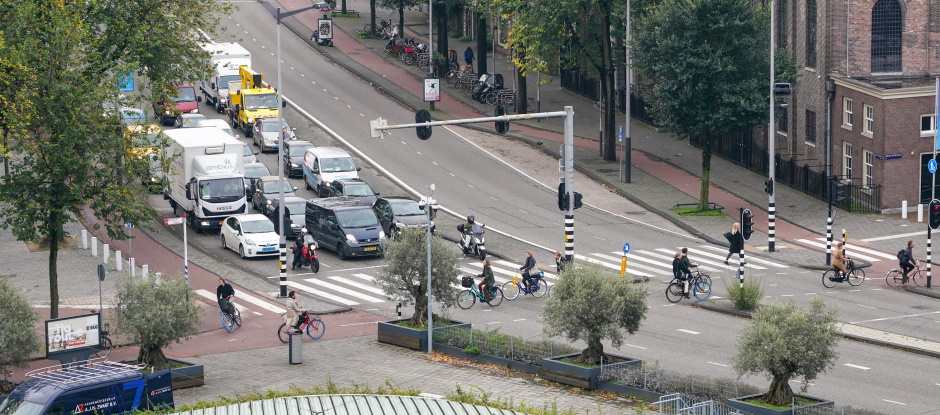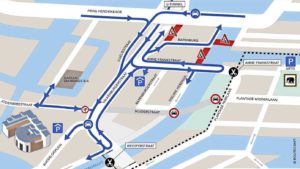
Photo: City of Amsterdam
Amsterdam experiment sees major road closed to cars
19 June 2023
by Christopher Carey
One of Amsterdam’s busiest streets, Weesperstraat, has been closed to cars for six weeks as part of an experiment to investigate the effects on traffic volume, safety, air quality and noise, and to test how residents feel about the measure.
From 12 June to 23 July, access to the street has been blocked from 6am to 11pm, and three surrounding streets will also be closed to prevent “cut-through traffic”.
“It is a six-week test to see in practice what effects the closure for through traffic has on the quality of life in the neighbourhood,” said Melanie van der Horst, Amsterdam’s Traffic Alderman.
“We have been receiving requests for measures against the nuisance caused by busy traffic for years.”
While the move has been welcomed by some residents, Van der Horst acknowledged it could “provoke resistance” from people.
“Many taxi drivers and entrepreneurs are concerned,” she said.

“And I understand very well that this test will certainly demand something from them in the coming weeks.”
The closure of Weesperstraat had been in the works for years, but was postponed several times.
This year, after an extensive consultation process, the pilot received permission to proceed.
Effects
Based on research and traffic modelling, the municipality expects that more than 40 percent of the cars affected by the closure will reach their destination just as quickly or faster via a different route.
For another 40 percent of the cars, the travel time is expected to be a maximum of five minutes longer.
The city will use a combination of concrete flower pots, green planters and other types of barriers to prevent cars from accessing the street – but it is still open to emergency vehicles and public transport.
When asked how the barriers could differentiate between a car and other vehicles, a spokesperson from the City of Amsterdam told Cities Today: “There are barriers with a scanner – the emergency services have a transponder on the window. When it is scanned, the barrier opens.”
According to the municipality, there will be an additional 250,000 people living in Amsterdam by 2048, and if there is no change to current policies it is projected that car traffic will grow by 40 percent – while the number of cyclists and public transport users will also double.
Reactions
The initial reactions to the project have been mixed, with some motorists firmly against it, but many local residents in favour.
On a political level, opposition parties in the city sent a letter to Van der Horst last week calling on her to quickly amend the street closure after reports that special public transport vehicles used to pick up and drop off people with disabilities have been blocked from the street.
The letter went on to say that the closure is impacting people using wheelchairs and personal mobility scooters, as well as the elderly.
In a tweet, city council member Daan Wijnants voiced his opposition to the scheme, writing: “The [closure] is simply too much. Just stop it – remove the barriers!”
The experiment results will be presented to the city council in November.
Image: City of Amsterdam










